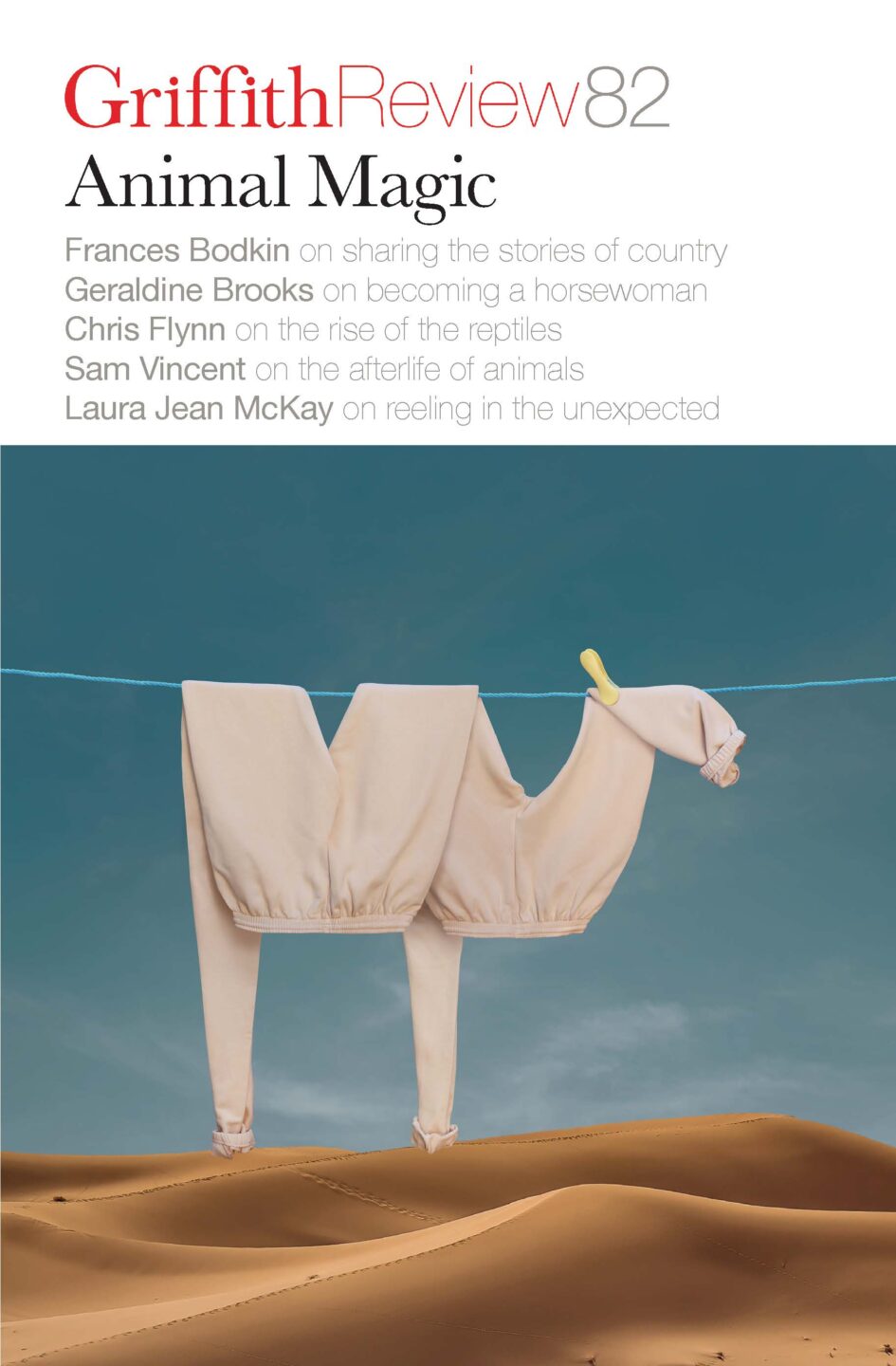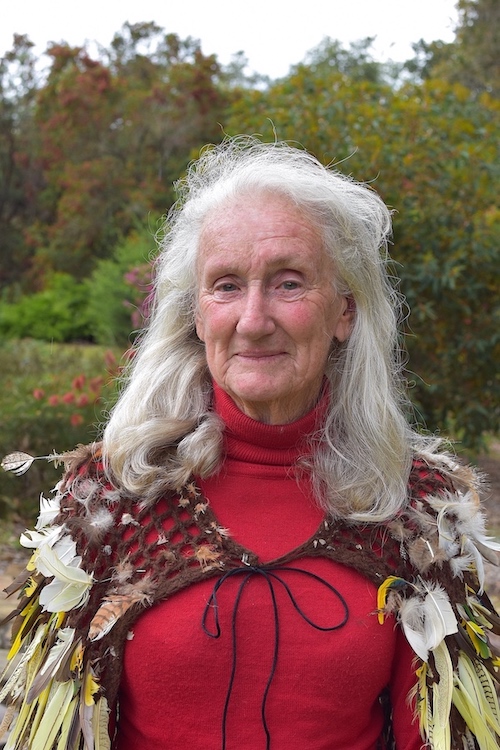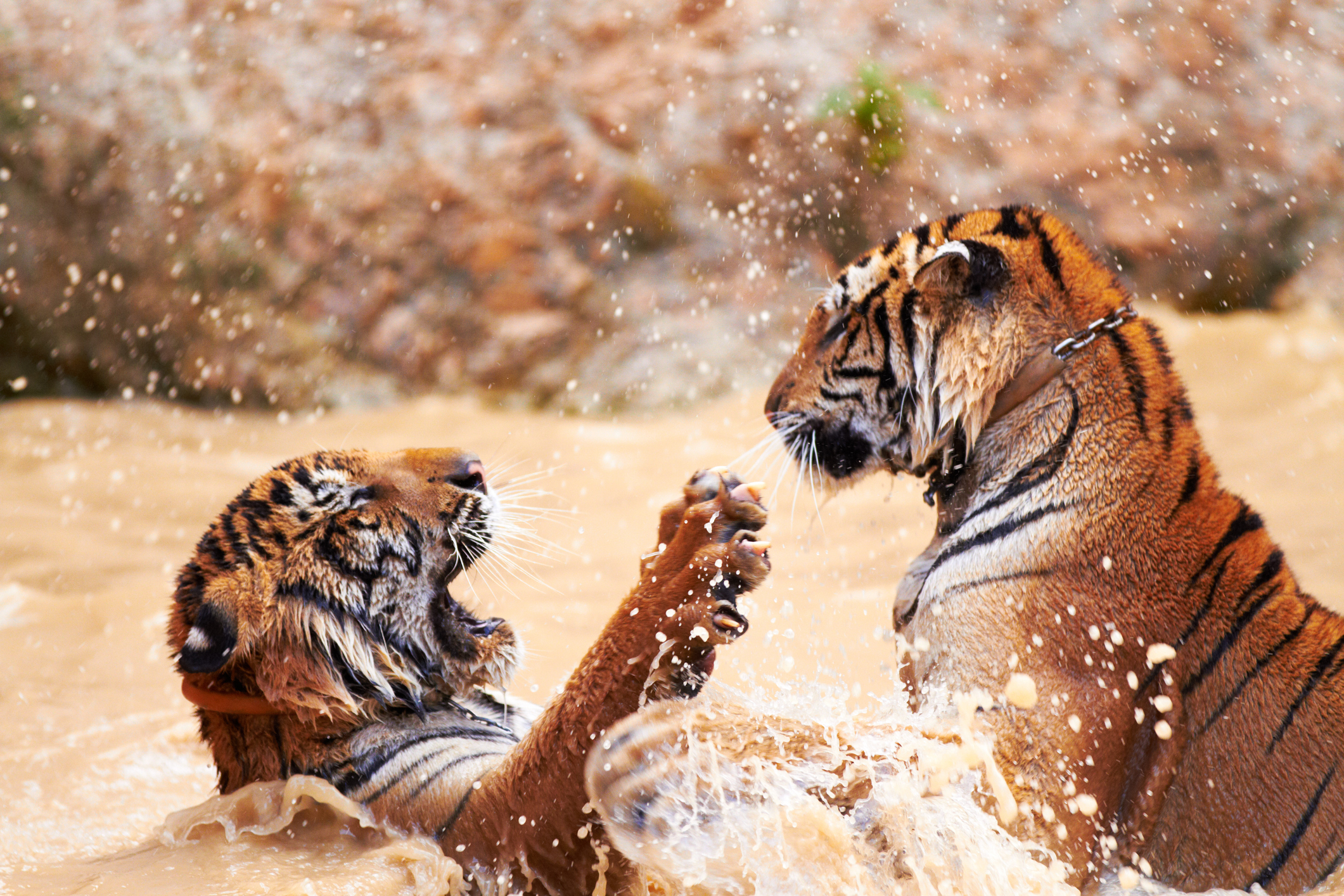Featured in

- Published 20231107
- ISBN: 978-1-922212-89-4
- Extent: 207pp
- Paperback, ePub, PDF, Kindle compatible

D’harawal Elder Auntie Frances Bodkin is a national treasure. A respected botanist and educator, she’s also the author of multiple books, including Encyclopaedia Botanica: The Essential Reference Guide to Native and Exotic Plants in Australia (1986), which details more than 11,000 plant species. Fran grew up learning the stories of D’harawal culture from her mother, and she’s spent her long career combining this Traditional Knowledge with Western approaches to scientific study.
In the 1970s, Fran helped establish the Australian Botanic Garden Mount Annan near Sydney. This 416-hectare site is home to more than 4,000 native plant species and is situated in what was once a meeting place for Indigenous peoples; today, it’s also home to a memorial for the Stolen Generations. The D’harawal name for Mount Annan is Yandel’ora, which means ‘place of peace between peoples’. This interview – which has been lightly edited and condensed for clarity – took place on a sunny autumn afternoon on a hilltop at Mount Annan.
CARODY CULVER: Can you tell me a little bit about where we’re standing in the Botanic Garden?
FRANCES BODKIN: This used to be the place where we had lookouts. Over there, there’s a high peak in the Blue Mountains near Katoomba so we can see the south-west, we can see to the west; over there you can see way past Liverpool. [You can see] the Harbour Bridge.
This was the women’s hill – this is where the women camped. This was the women’s hill because it was the highest hill and women like to know what’s going on. And from here you can see 120 miles right to the tip of the mountains. We could spot if [other tribes] were coming because they all used different fire techniques.
CC: Your childhood had a significant impact on your love of nature and plants – I understand that you were born under a tree?
FB: Well, sort of. Dad had an accident on the way to the hospital, and Mum had to go to the tree to lie under because in those days we didn’t have ambulances like we have today; we didn’t have radios and things like that. So I was born under the tree. I had a twin brother who was born dead, and we’re not quite sure who came first, him or me.
CC: Do you ever visit the tree?
FB: No, it’s gone – there’s a bloody great building there now. But it doesn’t matter because it’s still there in my mind. And it’s safe now because I went back some twenty years later and collected the seeds and stuck them in the botanical gardens.
CC: Can you tell me about the role your family played in nurturing your passion for plants and science? I believe your mother and your grandmother were particularly influential when it came to teaching you about plants.
FB: I’ve learnt from my nans (including one from my dad’s side), my uncle, my grandfather, but especially my mum. One of my nans taught me a lot about plants and what you can eat. A lot of people are allergic to some plants, and she taught me the tests to do on a strange plant – it’s a series of little tests. You crush the plant and rub it on the back of your hand…if there’s a rash you know you can’t eat it and you can’t use it. And the next test is on the inside of your elbow. If there’s no reaction there, no itchy bit or no red rash or anything, then you rub the plant under your arm. Those are the soft spots. And then when you’ve done all that and there’s no reaction, you rub it on your lip, and if nothing happens there you rub it on your tongue. And if nothing happens there, you just chew up a little tiny bit and swallow it and if there’s no reaction you can eat the bloody thing. You’re safe.
[Mum and Nan] were actually teaching me how to survive. I didn’t realise that, because in those days, for a lot of the kids with parents – or at least one parent – who was Aboriginal…those kids were taken away and adopted out. I was lucky enough that Mum and Nan had the sense to teach me how to use the trains, and every time I was taken away by men in suits – it was about five times – I was able to catch a train back home. And I remember once the inspector came along and asked me, ‘Where’s your parents?’ And I said, ‘Back there.’ And I had dimples and so I knew that I could charm people.
CC: You’ve still got those dimples, Fran. FB: I still use them sometimes.
CC: When did you know that you wanted to work with plants?
FB: Anything that grew puzzled me. I loved it; I loved nature. I loved the trees, and they were safety to me – I thought of it as friendship. At school all I had to do was muck up and they’d send me out to the playground to work on the garden. And because I enjoyed [that] immensely, when I was leaving school the reference that the headmistress wrote out for me was, This child is suitable only for menial duties. Menial duties was the last bloody thing I wanted to do. That’s alright – I got my revenge later.
CC: I’m interested in your thoughts on the relationship between Western scientific knowledge and Indigenous knowledge systems. You grew up with both, and you’ve studied in a Western academic context. I’ve heard you say that science has four parts – experimentation and measurement on the Western side, and observation and experience on the Indigenous side. How do you bring these four parts together?
FB: When I was at uni, I did four majors for a degree when you’re only supposed to do one. But I needed to get it knitted all together – the activity between plants themselves and the atmosphere, the weather, everything. The thing is, the systems are there. They’re there to be studied, so if nobody would teach me how to study them, I had to teach myself. So I did.
In the past five or six years there’s been a major step taken [towards developing a more holistic understanding of plants], which is really good – I can sit back and put my feet up. I think there’s more ability to find knowledge now – there wasn’t in those days. You had great barriers in your way if you were looking for something unusual. But I was lucky – I got a job in the New South Wales Parliament which gave me access to the parliamentary library, and I worked there for a long while.
CC: Why are plants are so important?
FB: Where do you get oxygen from? They were the first creatures on Earth, and we treat them as just pieces of wood with green leaves on but, really, [they have] feelings. You go and praise a tree and it’ll grow better. You’re kind to them, and they’ll grow beautifully. And they use the air to communicate – you can smell them a lot stronger [on some days] than you can on other days. There’s so much we can learn from the plants, even the little annual plants, and we don’t take notice of them. Gymea lily flowers can tell you when the whales are coming. One of the things I’ve investigated is why the ants can tell the weather – I carried out an experiment when I was at Macquarie University, and what I found was that if the groundwater level rises, you can expect rain, and the ants will pick this up. But we don’t look at the tinier things walking around and telling us what’s happening through
their actions.
The plants are all here for a reason. People use them as decoration, but they could also be using them as food or medicine or anything, and that’s why I started to write my books. We don’t go deep enough. Truly and honestly, we know so little about this land and so little about what it’s gone through.
Share article
About the author

Frances Bodkin
Frances Bodkin is an Australian botanist and D’harawal elder. She is the author of Encyclopaedia Botanica: The Essential Reference Guide to Native and Exotic...
More from this edition

The tiger and the unicorn
Non-fictionTigers are as concrete a metaphor as any man could wish: ferocious, territorial loners requiring vast landscape and huge quantities of prey. Henry had named his firm in the spirit of the money making he set out to do: an apex hedge fund, stalking longs and pouncing on shorts, untethered to the groupthink of a pack.

Before I forget again
Poetry I am a ceramic horse in kintsugi fields. Shards shred my tongue to gold rivers. Cracked and crazed – from fire gallops beast. Memory slips lapis lazuli. I break curses, gather spells. Nudge fresh letters in water troughs – watch words bob – shiny new apples to crunch.

Help wanted
Poetry The opening said no training required; the slaughterer’s tasks are two: stun and slaughter. With a third parenthetical: Remove the organs and the waste as needed. Heifers all have name tags here:...